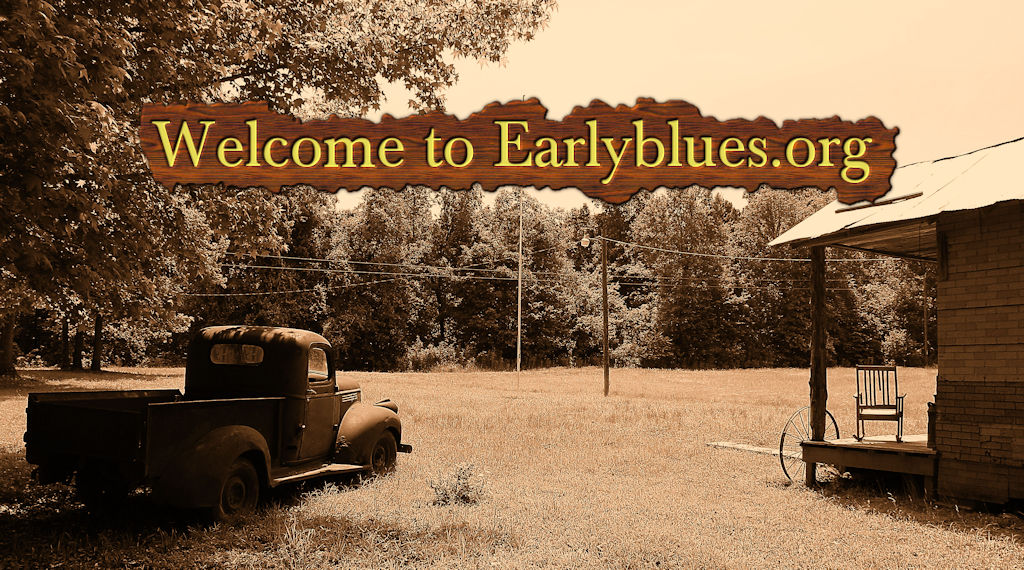BLUES ON THE MOVE
In these uncertain times, as with many music genres the ‘blues’ is having a hard time. Since the birth of ‘British Blues’ in the 1960’s the directions it has taken over the years is on a vast spectrum.
Early years
The ‘roots’ of all ‘blues music’ per se, was based, of course, in the deep south of America and was brought to the forefront of black American culture by *Alan Lomax, an American ethnomusicologist, best known for his numerous field recordings of folk music of the 20th century. Lomax’s greatest legacy is in preserving and publishing recordings of musicians in many folk and blues traditions around the US and Europe. Among the artists Lomax is credited with discovering and bringing to a wider audience in the 1930’s, include early recordings of blues guitarist Robert Johnson, and country blues singer Lead Belly along with many others.
‘Blues on the move’ even in the USA blues has travelled and morphed. Urban blues evolved from classic blues following the Great Migration, or the Great Northern Drive, to Chicago and Detroit and other industrial cities of the north from the 1920’s. Muddy Waters, who also was recorded by Lomax on the early 1940’s, moved to Chicago in 1943 and the advent of electric Chicago blues was born. Muddy Waters’ music has influenced various American music genres, including rock and roll and rock music.
B.B. King became one of the most important names in rhythm & blues music in the 1950s, introducing the ‘big band’ sound with plenty of brass, but his electric guitar expertise was at the forefront. He spent much of his time in Memphis but also travelled widely throughout the USA.
1960’s, 1970’s
The blues was changing with the advent of jazz and rock & roll throughout the 1950’s, but Chicago blues was still being played. This is where the beginning of the British Blues movement started with UK bands like The Rolling Stones, The Animals and others who were looking towards the Chicago sound during the early 1960’s. Their heroes were the likes of Howlin’ Wolf who recorded several songs that became his most famous tunes and were also played by the new British culture of blues artists.
In the UK during the early 1960’s John Mayall, who has become the ‘daddy’ of the British Blues movement, was beginning his long and prestigious career, along with other notable performers such as Alexis Corner. Throughout the 1960’s, many now high-flying blues performers, passed through John Mayall’s band as part of the Bluesbreakers. Eric Clapton, Peter Green, Mick Taylor to name but a few.
During the mid 1960’s, the electric and psychedelic styles of guitar playing were becoming prevalent and blues rock was edging into the fray. Cream, Jimmy Hendrix Experience, The Yardbirds and others were setting the parameters for the new movement. Towards the end of the 1960’s, the emergence of bands like Led Zeppelin and Deep Purple opened the doors for classic and progressive rock along heavy metal which emerged as we moved into the 1970’s with roots in blues rock, psychedelic rock, and acid rock. The Soul culture was also popular – again with its roots in blues.
Moving into the late 1970’s things were changing for the younger generation with the advent of Punk Rock basic with anarchy at its roots. Blues and Blues Rock were still being played but to older audiences, blues in its true form was beginning to dwindle.
1980’s 1990’s
The 1980’s and 1990’s were a blur music wise with so much synth pop and elecro’ stuff. The blues was still there in the background and there was a resurgence and growth of a new blues movement during the 1990’s and into the new millennium. One of the longest running Festivals – The Great British Rhythm & Blues Festival which celebrated 30 years in 2019 – was bringing back blues to the masses.
What’s happening now?
Blues has ‘morphed’ in so many directions – rhythm and blues, electric blues, acoustic blues, country blues, blues rock, blues based Americana, soul blues, rock ‘n’ roll, jazzy blues, folk blues, bluegrass, hillbilly blues, gospel, funky blues – and the list could go on. We need to remember where the roots began but accept that things move on and change. We can still refer to the greats such as Robert Johnson or John Mayall, but also embrace the changes and the new breed of British Blues artists.
During the last 20 years there has been a growth in blues-based clubs and a plethora of new blues and music festivals. There has also been a renewed interest in blues-based music, be it blues, blues rock or Americana and I’m glad to see so many more young artists becoming involved within the general genre. In recent times blues had become a medium for the older generation and that would certainly not be sustainable. With the advent of the digital age music has never been so accessible, as a new and young artist the opportunities are there to be heard on a global platform. Nothing, however, beats live music and the blues festival circuit has become a lifeline for the young and not so young musicians alike, as are the clubs and pub circuit.
With the present climate and this disastrous pandemic, the opportunities for live music have been virtually nil. Inventive and technically minded people have been making the most of a bad situation and we have seen live performances and festivals being produced, if only on a virtual platform. So well done to all those inventive folks.
Let’s hope we will be back to some normality soon, so bring on live music again. Roll on 2021!!!
Rosy Greer – Lancashire Blues Archive – UKBlues Federation
November 2020
____________________________________________
* Credits to Wikipedia for some of this information
